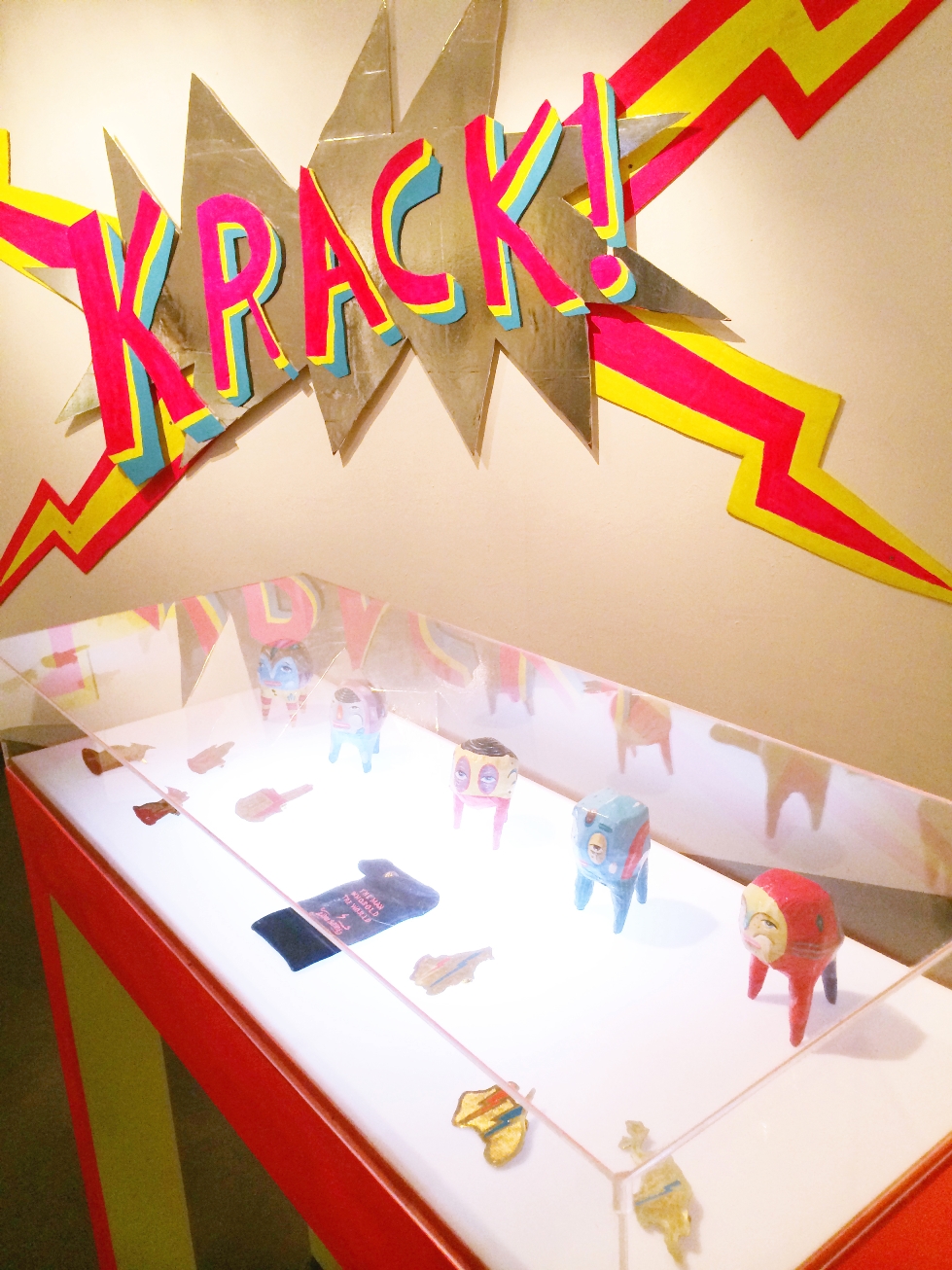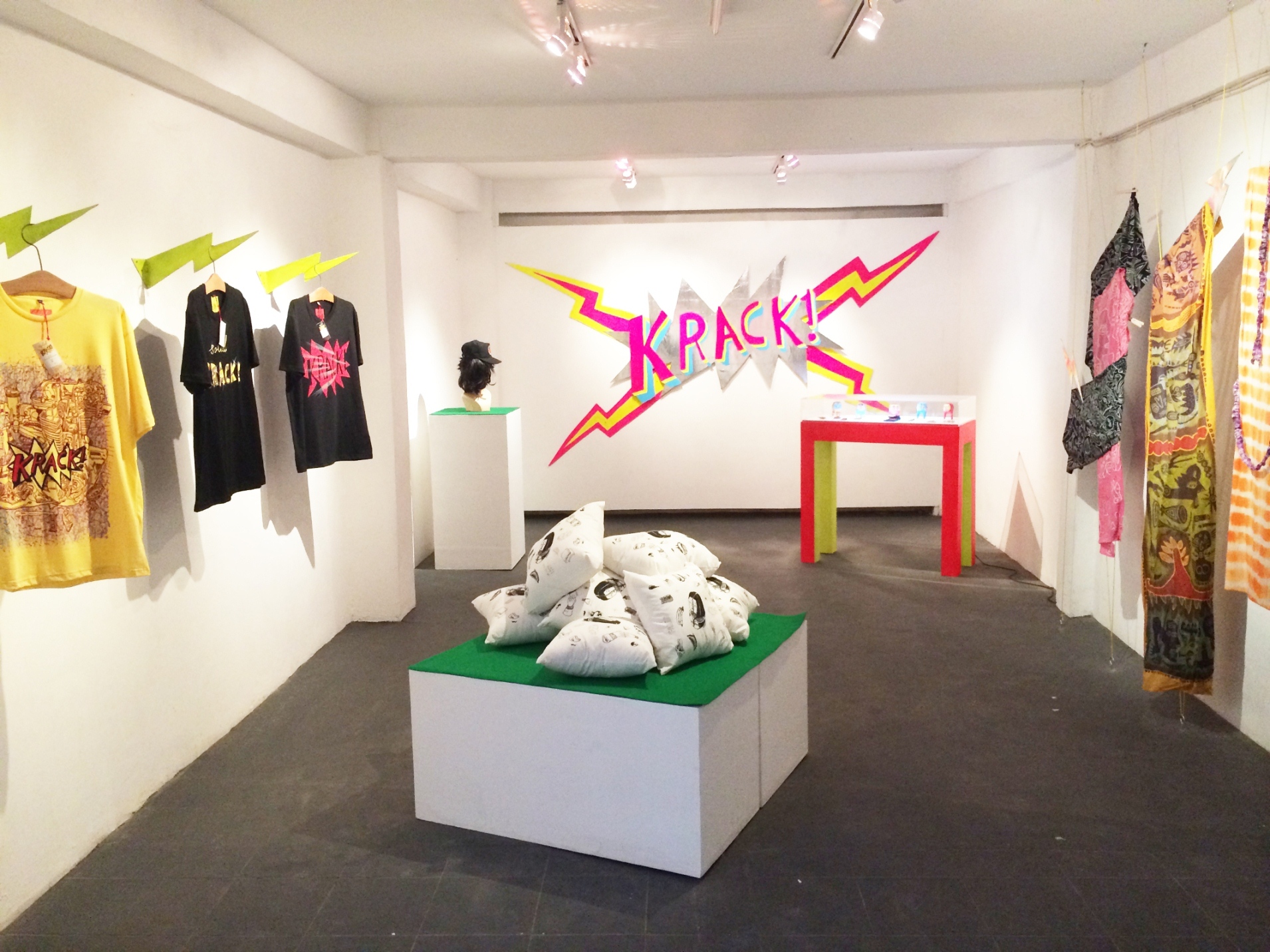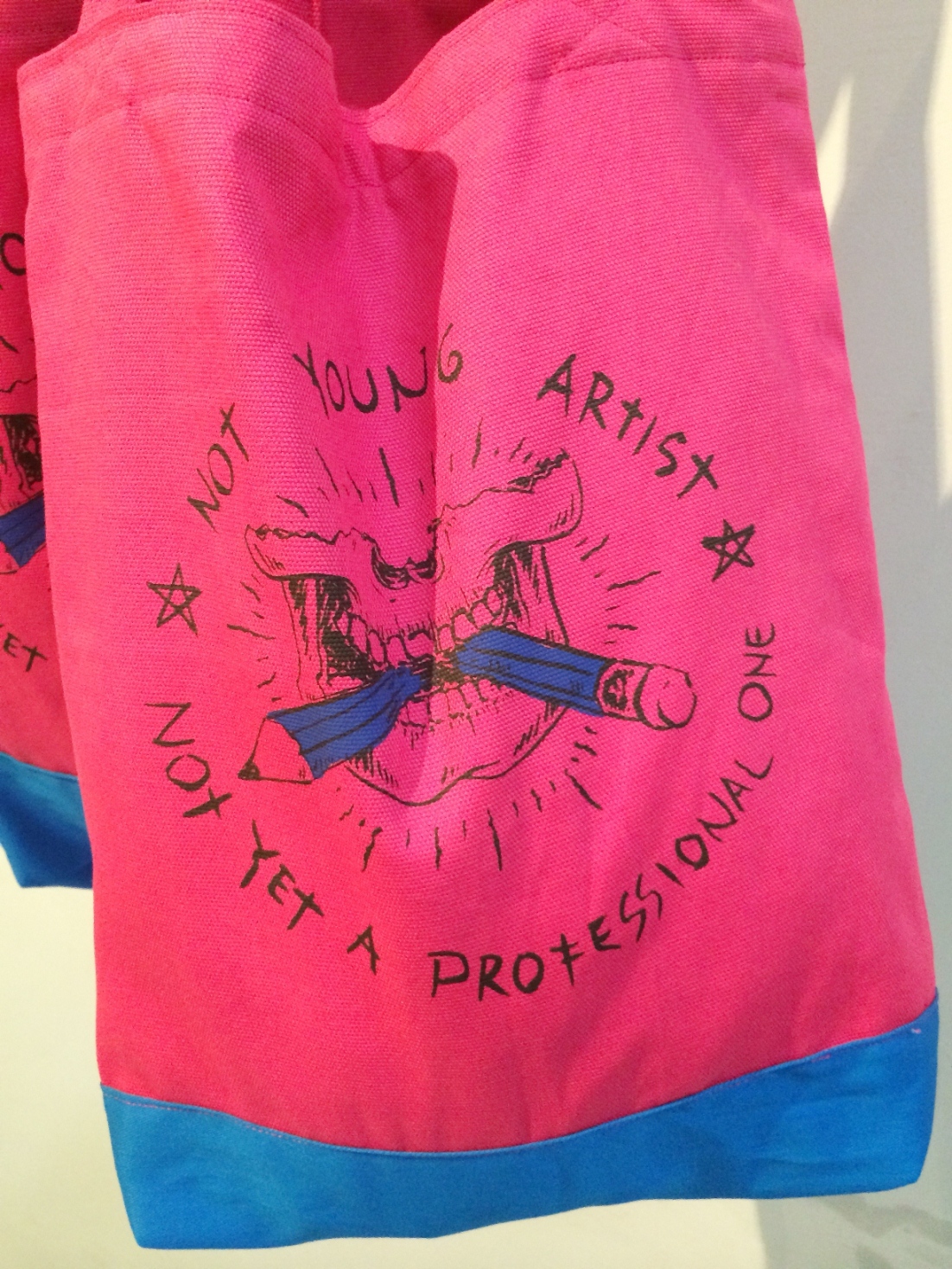Malcolm Smith
Hendra 'blangkon' Priyadhani, Not a young artist, not yet professional (tote bag, screenprinted on canvas) 2014 From Solid Krack! Krack Studio Yogyakarta 2014
Many artists see merchandising as a means to pay the bills while they wait for the big payday when they get famous for their ‘real work’. But the reality is often not that simple. Merchandising can take up a lot of time, for minimal returns, and can obscure the message of an artist or collective However, if done well, it can provide new ways of engaging audiences and new avenues of social commentary. And pay the rent. Few artists relish economics, but like they say: you either have to work it, or it ends up working you.
Last year, I attended a gallery opening in Sydney of an artist collective from Southeast Asia. As the night progressed, and the crowd became increasingly lubricated by the free wine on offer, the artists brought out a suitcase full of T-shirts, some of which were printed with exactly the same images as the editioned works hanging on the walls. The T-shirts cost A$20 each and were snapped up immediately. The printed works on the walls cost around A$150. The gallery owner grumbled to me, ‘I tried to hide those T-shirts. Every T-shirt that we sell is an artwork we didn’t sell.’
I’m involved with an alternative space slash printmaking studio in Yogyakarta called Krack! that critically examines issues and developments in our region, and explores innovative approaches with the print medium. We work mainly with artists in the first 10 years of their graduation and provide them with a space to develop their ideas and skills up to the point when they are able to maintain their practices independently.
A key issue for us since we started has been sustainability. This is in terms of the materials and methods that we use in the studio, and how we, as a studio, can continue to pay the rent, buy equipment and feed ourselves. Importantly, we are also interested in how we can diversify opportunities for artists aside from Indonesia’s problematic commercial art market or the very limited public funding opportunities.
This means that we need to sell stuff so that Krack! can keep paying its bills and artists can keep on making work. The three members of our collective, Prihatmoko Moki, Rudi Hermawan and myself, all have plenty of art experience but barely any sales experience. It’s been an interesting learning curve.
 Installation view, Solid Krack! Krack Studio Yogyakarta 2014
Installation view, Solid Krack! Krack Studio Yogyakarta 2014
Most of Krack!’s sales are made outside of Yogyakarta, or to people visiting Yogyakarta from outside – mainly Jakarta, Singapore or Australia. We get visitors almost every day, who drink coffee and chat with us, and flip through our folders of previous exhibitions. Some of them are collectors, some are curators, some are artists but mostly, they are just people who love art, and are fascinated by the critical mass of artistic production in Yogyakarta and Southeast Asia generally, and want to understand it better. Often, they buy works. My feeling on this, generally, is that they buy the item not for its ‘investment’ value but because they like it, and also because they like us and they want to support what we are doing.
In May this year, Moki developed a range of merchandise for our studio called ‘Solid Krack!’. He invited a number of artists to contribute T-shirts, textiles, accessories and toys that are now on permanent display at the front of our gallery space. Our initial target market were our friends from Yogyakarta, who always attended our shows but couldn’t really ever afford to buy anything.
While the challenges of exploring new print techniques and new materials were interesting and fun, we couldn’t claim that the project was particularly successful for us financially. For a range of merchandise, that was the whole point. The problem was that after we had taken out the costs of production, the artist’s commission, and the costs of installation, packaging and so forth, the profit margin was pretty negligible. OK it was negative.
But we haven’t given up on Solid Krack!. Moki is now exploring practical alternatives, encouraging our artists to rethink their materials and processes, and to produce their work in larger editions without sacrificing quality. We hope this will reduce cost and time.
At the same time, we are reconsidering what it actually means for us to produce merchandise in a critical context. Increasingly, contemporary design in Indonesia, as in the rest of the world, is being used to comment on society, politics and the human condition. This can be done through the innovative use of materials, environmentally and socially friendly practices or through products which challenge traditional notions of luxury, brand or taste.
 Front: Yudha Sandy, The Man Who Sold The World & Angry Young Man (series of brooches, etched brass with enamel) 2014. Rear: Hendra 'hehe' Harsono, Toys (paper mache, hand painted) 2014
Front: Yudha Sandy, The Man Who Sold The World & Angry Young Man (series of brooches, etched brass with enamel) 2014. Rear: Hendra 'hehe' Harsono, Toys (paper mache, hand painted) 2014
For us, as a print studio, we are always aware of our medium’s heritage as a ‘democratiser’ of art and we try to honour that. Contemporary design offers a similar potential. When artworks are over-ascribed with hoity-toity theory and lofty price tags, there is something quite subversive about turning a sculpture into a candlestick holder or a painting into a tablecloth.
So I guess this my point: the reality is that artists in Indonesia (and everywhere, for that matter) cannot survive if they don’t think creatively and strategically about how they engage with their market as well as their audience. ‘Genius’ is not enough to assure anyone’s ongoing career as an artist. Having said that, it’s important to never lose sight of the fact that the real value of a work is not its price tag, but its ability to comment critically on the conditions in which we live and articulate the curly edges of social change as it unfurls before us.
Malcolm Smith is an Australian artist/art manager and curator based in Yogyakarta. Alongside Prihatmoko Moki and Rudi Hermawan, he is one of the founders of Krack!, a print studio and gallery that focuses on critically engaged, contemporary Indonesian printmaking. Before moving to Indonesia, he managed exhibition programmes in well-regarded contemporary art spaces around Australia, including the Australian Centre for Photography, Object: Australian Centre for Craft and Design, and the Northern Territory Centre for Contemporary Art.
